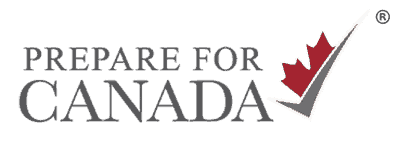
Online learning, also known as e-learning, is a practical and convenient way for people from around the world to develop and enhance their professional skills. Taking online learning courses is also a great way to learn new skills and get certified from the comfort of your home. People from all over the world are upgrading their skills and learning new ones for the workplace. It is now easier than ever to learn something new, whether you want a live instructor, or want to work at your own pace.
Completing an online certification course and adding it to your resume can greatly increase your chances of getting hired. Canadian employers highly value job candidates that have an online certification (a certified online course). A certification indicates that you have the skills required to work in Canada and to succeed at the job. And, if you plan to work in a regulated occupation in Canada, getting the required training will be essential.
Advertisement:
Online learning has been seeing a lot of growth over the past decade. Now, due to the COVID-19 pandemic, online learning has become the new normal. And, it’s safe to say that online learning isn’t going away anytime soon. Even after the pandemic online learning is expected to keep growing.
Advertisement:
Within the category of online learning, there are different types of online learning methods. The most common methods include:
- synchronous learning,
- synchronous learning
- hybrid online learning.
Any other online learning methods usually fall under these three categories or somewhere in between.
What are Online Certification Courses?
Online certification courses give you a certificate upon completion. This certificate indicates that you have finished the course and have all the skills taught in that course. These are the types of courses that you can include in your resume and show employers.
Certification courses generally cost more than regular courses and have assessments as you progress through the course. In the end, however, certification courses are worth your money because they can mean the difference between getting hired and not getting the job. And, even if you have not yet completed the course, you can always indicate that you are in the process of completing the training and provide the date that you expect to complete it.

Related Posts:
Crafting Your Job Search Action Plan to Work in Canada
Advertisement:
Canadian Certification Can Advance Your Career
How do Credential Evaluation and Recognition Differ? (Infographic)
Essential Tips | Your First Job Interview in Canada
Working in Canada| A Guide to Land Your Dream Job!
Synchronous Online Learning
Synchronous online learning is online learning that happens in real-time with a live instructor. This method allows the instructor and the learners to gather at a virtual place at the same time. This online gathering is usually conducted through online video call apps such as:
- Zoom
- Skype
- Microsoft Teams
- Google Meet.

The reason most people prefer synchronous online learning methods is that it is an interactive learning experience. You will participate in active discussions, interact with instructors and other students, and get immediate feedback. It is the closest you can get to a traditional classroom when you are learning online.
Some people might even prefer synchronous online learning over traditional classroom learning. This is because synchronous learning is flexible. Even though it takes place in a live setting, synchronous learning offers flexibility. This does not mean that there will be no due dates, but you will get to decide how to divide your work and get things done on time.
Many organizations offer online synchronous courses, including many professional associations. And if your work-from-home job requires training, online synchronous lessons will probably be the learning method used. If you want to sign up for a certain type of synchronous course, your best bet is to browse the internet and check out different courses offered by universities. You can also check with professional or trade associations that represent your occupation.
Asynchronous Online Learning
Asynchronous online learning is the opposite of synchronous online learning. This type of online learning is based on learning at your own schedule. This means that you will not get to talk to your instructor or interact with peers. You will most probably follow along with a video series and do the task accordingly. This is the most common type of asynchronous learning and it goes by the name Massive Open Online Course (MOOC).
Understanding MOOCs

The objective of MOOCs is to attract people in the thousands and get them to sign up. Because of this, you can usually get MOOCs for very reasonable prices. You can even find MOOCs are free. However, if you want to get a certification you will have to pay a fee. The cost for courses can vary depending on the certificate that you receive.
MOOCs have both advantages and disadvantages. A MOOC offers a very flexible style of learning, maybe a bit too flexible. MOOCs have a completion rate of under 10%. This means that only 10% of the people that enroll for a MOOC actually complete it. This is directly related to the fact that MOOCs are designed for people that want to learn at their own pace. Now, let’s take a look at some of the most common MOOCs and how they work.
1. Linear Autoplay MOOCs
Linear autoplay courses are the most basic online courses and they are also the most common MOOCs. However, linear autoplay courses are not very engaging. All have to do is watch a couple of videos to finish them. This type of MOOC consists of a series of video modules that, when put together, teach you a new skill or subject. Because there are no assessments, these MOOCs usually don’t offer a certificate.
2. Linear Autoplay MOOCs + Assessment
This type of MOOC is the same as linear autoplay MOOCs except that it also offers assessments. Typically, after watching a few video modules, you will have to pass an assessment before you can move on. This ensures that you are learning what the instructor is teaching. Some of these MOOCs may offer a certificate because of the learning assessments. In general, these courses offer a good mix of flexibility to keep learners on track.
3. Random Access MOOCs
This type of MOOC is one of the most flexible and open-ended courses you can take. It has no linear order to watch the videos, no assessments, and no certification at the end. Rather, students get to choose in which order they watch the videos. This can be both positive and negative. Random access MOOCs are made for students that only want to learn a specific part of a course. Rather than taking the whole course to learn only a part of it, random access MOOCs allow you to watch any part of the course, in whichever order.
MOOCs are a great option if you feel like you are committed to learning something online. MOOCs are a cheaper and more flexible alternative to synchronous online learning. Some even offer certifications!
Some of the best places to sign up for MOOCs are Coursera, and EdX. Coursera and EdX have partnered with the University of Toronto to provide free MOOCs. They are a great way to get started with online courses.
Another great way to get free MOOCs is through your public library in Canada. If you have a library card from your public library, you will also have free access to Lynda, also known as LinkedIn Learning. To access Lynda, you can log in to your library’s website and find the Digital Content section, or something similar. Each library has its own website so this will vary from library to library. However, almost every public library in Canada offers free access to Lynda.
Many newcomers are interested in free online resources to help them improve their language skills in English and French. If that sounds like you, the government of Canada has some great resources for you. Resources of the Language Portal of Canada can provide great tools to help you improve your language skills in Canada.
Hybrid Online Learning
Hybrid online learning is a common e-learning style. It is a mix of asynchronous and synchronous online learning to give students flexibility and to interact with peers and instructors.
You can think of hybrid learning as asynchronous learning with a few online meetings. You will mostly work on your own time. But there will be deadlines and you will also have the option to talk to your instructors and peers. Most of the instructors teaching these classes will also provide an email or some sort of messaging tool to contact them. This will give you access to feedback, even if you might not get an immediate response.
Keep in mind that hybrid online learning is different from hybrid classes. These terms can easily be mixed if you do not know the meaning of each. Hybrid classes are a mix of synchronous online learning and traditional classroom learning. This style of learning is also used by schools, universities, and any teaching institutions that are otherwise, taught in person. Because students must go to a school, It is not considered online learning.
Online learning has many uses and it can be useful to a wide range of people. Whether you are looking to upgrade your skills for the workplace or want to learn a new skill for yourself, online learning is probably the way to go. Online courses will not only help you with getting the job, but they will also help you excel at it. And the best thing is that learning these skills is now easier than ever.
To learn more about working in Canada, visit our Finding a Job in Canada resource page for free resources, information, and upcoming webinars.

My name is Zain Usmani and I am a freelance content writer who currently resides in Mississauga, Ontario. I immigrated from Pakistan to Canada 5 years ago and have lived in many cities ever since. I have lived in Calgary AB, Edmonton AB, Regina SK, London ON, and Mississauga ON, while visiting over 40 Canadian cities and towns. I have a great passion for writing and I love helping people through it.

